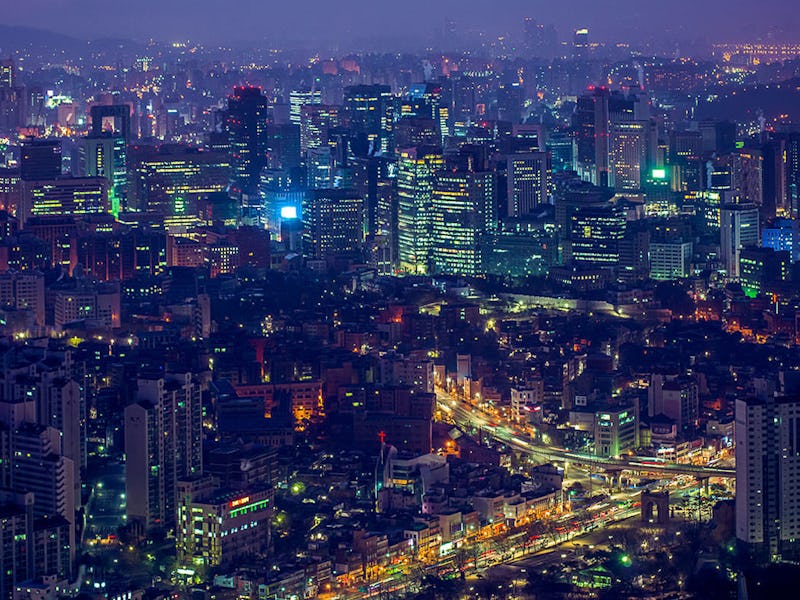Jeffrey Tumlin: Future Cities Will Have Self-Driving Brothels
The city expert claimed that urban landscapes will have far fewer cars.

The city of the future is going to have fewer cars around. That’s according to Jeffrey Tumlin, director of strategy at Nelson/Nygaard, who spoke earlier this month at the AutoMobility show in Los Angeles about how a change in car habits will radically alter the landscape. Inverse spoke with Tumlin about how self-driving cars will push this vision forward, why Uber is going to be key, and whether self-driving brothels may whizz round the streets.
You previously said a major client of yours was worried about falling parking garage sales, until they realized beer sales were spiking. Could you expand on that?
I have a client who has a major events facility that cannot be named, and parking is a large component of their revenue. One of the things they had been observing is it’s already cheaper and easier for many to take Uber or Lyft than it is to drive themselves and park. So this was creating some concern based on their current revenue model, but they actually observed that people were staying longer, spending more money on site, and having a better time.
Tumlin speaking at a TEDx talk in Sacramento in 2013.
You mentioned in your talk about the network effect of having people living in the suburbs meaning wider roads, which has a knock-on effect that widens roads further out. Will future roads have less lanes, possibly replacing existing lanes with bike lanes?
Well, not necessarily. We’re at a point of a very difficult choice. There is one vision of the future of cars, the Tesla vision, where everyone owns their own autonomous Tesla. Here, we’re going to need a lot more traffic lanes than we do now. When you can live four hours from work, and use that time to sleep or work at your desk, autonomous vehicles unleash an unprecedented level of what we call “induced demand,” so any gains in efficiency are offset by a lot more driving.
On the other hand, if vehicles are primarily shared, where you just grab the car you need and go, the increase in efficiency can actually allow us to not need as much space for cars. That space can be re-used. There’s this opportunity, one is the sort of Blade Runner vision of the future of mobility, where all of our public rights of way are completely consumed with mobility, and there’s the Her vision of the future of Los Angeles, whereas our dependence on driving declines, the city streets are retrofitted to become green, gracious, and delightful places to walk.
To me, cities are these monolithic, built-up areas where the council might change a road layout if people petition for months on end. Will we witness these changes anytime soon?
We’re going to be in a very long transition phase. During this phase, certain critical actions need to occur to lead us towards a greener, better more delightful urban future. One step is public transits must be the first to begin switching to autonomous vehicles, because the geometry of cities depends upon successful, very high capacity modes.
Another step is that cities are going to need to price autonomous vehicle fleet vendors. Price them not only according to miles of road they use, but have that price vary according to congestion levels, price empty seats to ensure that our streets are used for the highest public good.
You mentioned in your talk that driverless cars could take a number of forms, like offices or even hot tubs. Could you expand on that?
It’s funny how few people have understood the future revenue model for autonomous vehicles. Google, for example, has already recognized that the most valuable advertising space in history will be the inside of autonomous vehicles. Because the vehicle knows who you are, it has your credit card information, and you are captive in a space that will be covered in screens.
I’m expecting there’ll be a lot more specialization as well. All the service providers, if it’s Amazon trying to sell you stuff, or the equivalent of shared office space, they’ll put on wheels and allow you to work, or prostitution services, which I think will quickly become ubiquitous, with autonomous vehicles fitted out as brothels.
Think about it! It’s perfect, right? It’s not a fixed brick-and-mortar space, so it’s not subject to municipal regulation. You’ve got oftentimes exactly the right period of time, it’s reasonably safe as identities of both parties are known, and you’ve got nothing else to do for a period of time.
Looking further ahead, Uber is talking about a vertical takeoff and landing (VTOL) ride sharing system. Do you see these becoming a big part of future cities?
I think there will be significant objections to the noise impact. But here in the San Francisco bay, it’s easier to imagine short hop flights over the bay replacing ferry travel as the faster way of traveling.